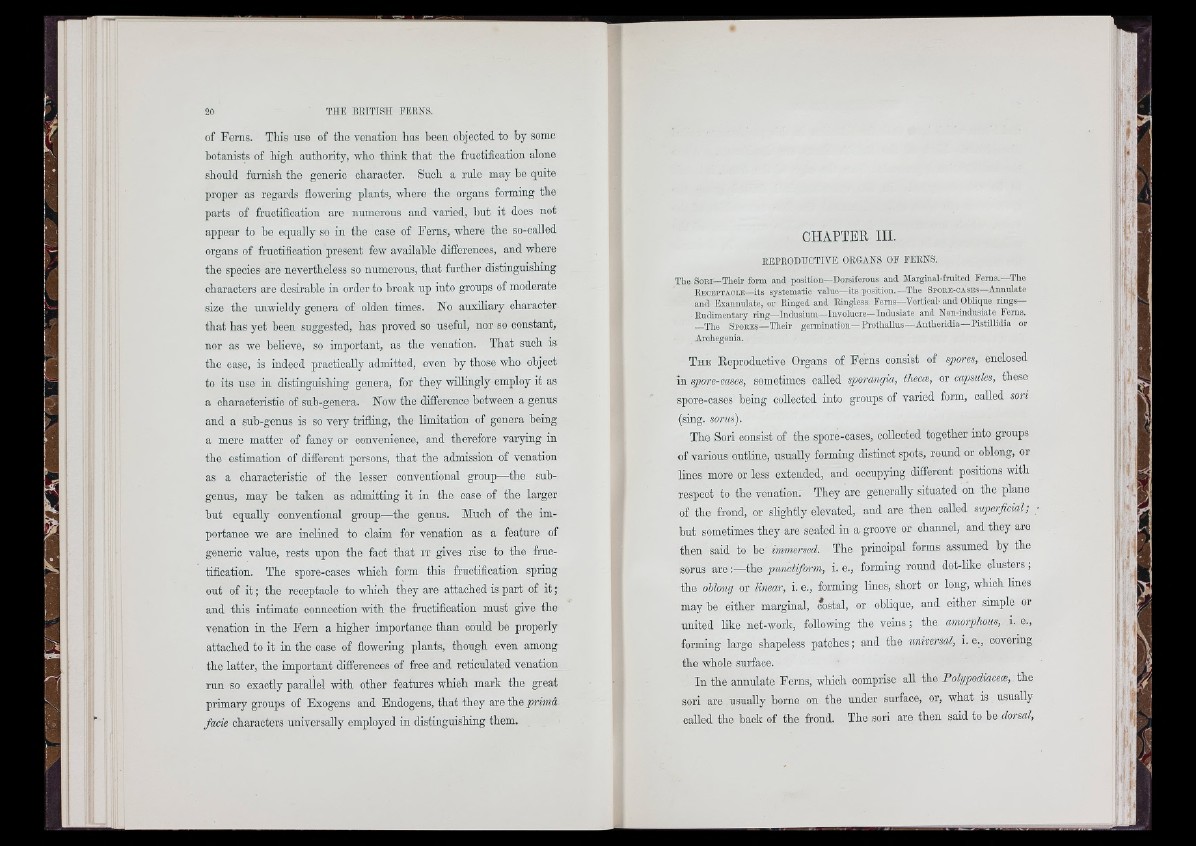
of Ferns. This use of tho venation has been objected to by some
botanists of high authority, who think that tho fructification alone
should furnish the generic character. Such a rrde may he quite
proper as regards fiowcring plants, where the organs forming the
parts of fruotifioation aro nnmerons and varied, hut it does not
appear to he equally so in the ease of Ferns, where the so-called
organs of fruotifioation present few available differences, and where
the species are nevertheless so numerous, that further distinguishing
characters are desirable in order to break up into groups of moderate
size the unwieldy genera of olden times. No auxiliary character
that has yet been suggested, has proved so useful, nor so constant,
nor as we believe, so important, as the venation. That snob is
the case, is indeed practically admitted, even hy those who object
to its uso in distinguishing genera, for they willingly employ it as
a characteristic of suh-gonera. Now tho difference between a genus
and a sub-genus is so very trifling, the limitation of genera being
a mere matter of fancy or convenience, and therefore varying in
the estimation of different persons, that the admission of venation
as a characteristic of the lesser conventional group—the snb-
genus, may be taken as admitting it in the case of the larger
but equally conventional group—the genus. Much of the importance
wo are inclined to claim for venation as a feature of
generic value, rests upon the fact that i t gives rise to the fructification.
The spore-cases which form this fructification spring
out of it ; the receptacle to which they are attached is part of it ;
and this intimate connection with the fruotifioation must give the
venation in the Fern a higher importance than could be properly
attached to it in the case of flowering plants, though even among
the latter, the important differences of free and reticulated venation
run so exactly parallel with other features which mark the great
primary groups of Exogeus and Endogens, that they are the prima
facie characters universally employed in distinguishing them.
CHAPTER III.
EEPEODirCTIVE ORGANS OF EERNS.
The S o r i— Their form and position—Dorsiferous and Marginal-fniited Ferns.—The
R e c e p t a c l e—its systematic value—its position.—The S p o r e -c a s e s—Annulate
and Exannnlate, or Ringed and Ringless Ferns—Vertical-and Ohligue rings
Rndimentary rin g—Indusinm—Involucre—Indusiate and Non-indnsiate Ferns.
—The S p o r e s— Their g e rm i n a t i o n— Pro th allu s—Antheridia— PistiUidia or
Archegonia.
T h b Reproductive Organs of Ferns consist of spores, enclosed
in spore-cases, sometimes called sp>ormi(jia, thecce, or capsules, these
sporo-oasos being collected into groups of varied form, called sori
(sing, sorus).
The Sori consist of tho spore-cases, collected together into groups
of various outline, usually forming distinct spots, round or oblong, or
linos more or less extended, and occupying different positions with
respect to the venation. They are generally situated on the plane
of the frond, or slightly elevated, and are then called superficial; ■
but sometimes they are seated in a groove or channel, and they aro
then said to bo immersed. The principal forms assumed hy the
sorus are :—the pimetiform, i. e., forming round dot-like clusters ;
the oUoncj or linear, i. o., forming lines, short or long, which lines
may he either marginal, costal, or oblique, and either simide or
united like net-work, following the veins ; the amorphous, i. e.,
forming large shapeless patches ; and tho universal, i. o., covering
the whole surface.
In the annulate Ferns, which comprise all the Polypodiaeece, the
sori are usually borne on the under surface, or, what is usually
called the back of the frond. The sori are then said to he dorsal.